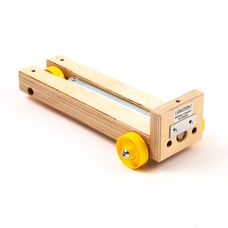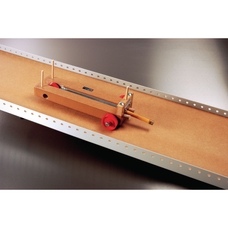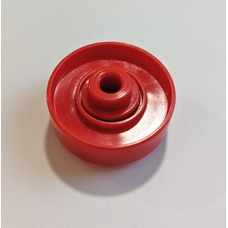Philip Harris Long Trolley Runway
Philip Harris Long Trolley Runway
Product code: G1007857
Product Description
Designed to provide a smooth, flat, easily inclinable surface for dynamics experiments using trolleys.
With metal side rails and plastic feet.
- Dimensions: 2.4M x 0.3M
Associated Products:
- Dynamics Trolley (Wooden) - B8A42006
- Dynamics Trolley (Metal) - B8R05959
An alternative ramp size is also available (B8A84785)
- Key Stage 3 Physics - Motion and Forces: Speed and the quantitative relationship between average speed, distance and time (speed = distance ÷ time). The representation of a journey on a distance-time graph.
- Key Stage 4 Physics - Forces and Motion: Forces as Vectors. Interpreting Quantitatively graphs of distance, time, and speed. Explain the vector-scalar distinction as it applies to displacement, velocity and speed. Make and interpret measurements of distances, times, speeds and accelerations,and represent these in graphical form. Explain that frictional forces affect movement and depend on the properties of the surfaces involved. Relate the newton as the unit of force to the units of inertial mass and of acceleration.
Designed to provide a smooth, flat, easily inclinable surface for dynamics experiments using trolleys.
With metal side rails and plastic feet.
- Dimensions: 2.4M x 0.3M
Associated Products:
- Dynamics Trolley (Wooden) - B8A42006
- Dynamics Trolley (Metal) - B8R05959
An alternative ramp size is also available (B8A84785)
- Key Stage 3 Physics - Motion and Forces: Speed and the quantitative relationship between average speed, distance and time (speed = distance ÷ time). The representation of a journey on a distance-time graph.
- Key Stage 4 Physics - Forces and Motion: Forces as Vectors. Interpreting Quantitatively graphs of distance, time, and speed. Explain the vector-scalar distinction as it applies to displacement, velocity and speed. Make and interpret measurements of distances, times, speeds and accelerations,and represent these in graphical form. Explain that frictional forces affect movement and depend on the properties of the surfaces involved. Relate the newton as the unit of force to the units of inertial mass and of acceleration.




